
Historic center of Split
Provided by:
Demo

Split, the second-largest city in Croatia, represents a unique blend of ancient history and modern Mediterranean life. The city developed around the monumental palace of the Roman emperor Diocletian, built in the early 4th century, which still forms its historical center. This impressive building, one of the best-preserved Roman palaces in the world, became the nucleus of a medieval city when, in the 7th century, the inhabitants of nearby Salona, fleeing the Avar and Slavic invasions, sought refuge within its walls. During the Middle Ages, Split evolved as an autonomous commune, initially under Byzantine and, from 1420, Venetian rule. During this period, the city became an important commercial and maritime center, serving as an intermediary in trade between the Ottoman Empire and Venice. The city statute from 1312 reflects the developed legal culture and communal self-government. After the fall of the Venetian Republic in 1797, Split went through periods of Austrian and French rule. Notably significant changes took place in the early 19th century when the city walls were demolished and the Split Riva was built, today one of the city's symbols. Under Austrian rule in the second half of the 19th century, the city underwent significant modernization, especially after the construction of the railway line in 1877. The 20th century was marked by rapid growth and industrialization, particularly after World War II. The city expanded with new residential areas, and shipbuilding and other industries developed. In 1979, the historic core of Split was inscribed on the UNESCO World Heritage List, recognizing the exceptional value of its cultural and historical heritage. Today, Split is an important economic, university, and tourist center. Its historic center, with Diocletian's Palace at its heart, represents a living monument where history continually intertwines with everyday life. The city is known for its rich cultural heritage, which includes numerous churches, palaces, and museums, as well as its vibrant cultural scene, sporting achievements, and the distinctive Mediterranean mentality of its residents. Split is also the birthplace of many significant historical figures, most notably Marko Marulić, the father of Croatian literature. The city preserves a rich tradition of klapa singing, which is inscribed on UNESCO's list of intangible cultural heritage, as well as the Mediterranean way of life, evident in lively markets, outdoor cafes, and evening strolls along the Riva. With around 180,000 inhabitants, Split is today an administrative, economic, and cultural center of Dalmatia. Its port remains one of the most important on the eastern Adriatic coast, connecting the mainland with the Dalmatian islands. The city has successfully developed as a tourist destination, attracting visitors with its unique combination of historical monuments, Mediterranean atmosphere, and modern urban life.
Points of interest
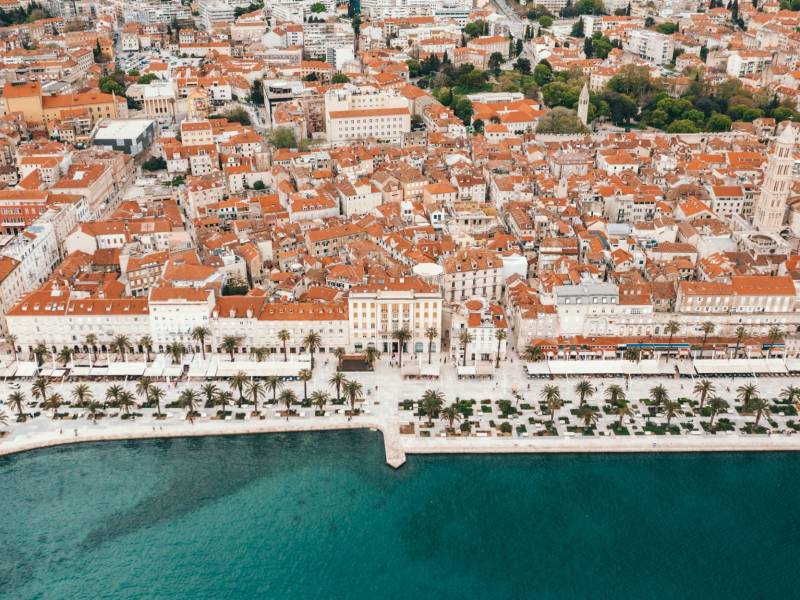
#1
Diocletian's Palace
Diocletian's Palace stands as one of the most remarkable monuments of Roman architecture, built at a crucial turning point in the Empire's history. Emperor Diocletian, born as Diocles in nearby Salona around 244 AD, rose from humble beginnings to become one of Rome's most significant reformers. After ruling for 20 years, he made the unprecedented decision to retire, choosing the sun-bathed coast of Dalmatia for his retirement palace. Construction began in 295 AD and took a decade to complete, employing thousands of workers and artisans. The massive complex, covering 28,900 square meters, showcases the Roman Empire's immense resources and engineering prowess. The builders sourced materials from across the Mediterranean: pristine white limestone from the nearby island of Brač, marble from Italy and Greece, and impressive granite columns and sphinxes from Egypt. The palace's design brilliantly merged two Roman architectural traditions: a luxurious imperial villa (villa urbana) and a military fortress (castrum). Following military camp principles, two main streets - the north-south cardo and east-west decumanus - divided the complex into four quarters. The fortress-like exterior walls, reaching heights of 28 meters and reinforced with 16 towers, reflected the increasingly unstable times of the late Empire. The southern section, facing the sea, housed the emperor's private quarters, featuring a magnificent domed vestibule, grand audience halls, and private temples. The imperial apartments showcased the height of Roman luxury with marble-clad walls, intricate mosaics, and sweeping sea-view galleries. A series of ceremonial and residential spaces demonstrated the complex protocol and lifestyle of a Roman emperor. The northern half served more practical purposes, containing military barracks, servant quarters, and storage facilities. The palace was essentially a self-contained city, capable of supporting a large population including the imperial retinue, military garrison, and service staff. After Diocletian's death around 316 AD, the palace remained an imperial property. However, its greatest transformation began in the 7th century, when residents of nearby Salona, fleeing Avar invasions, sought refuge within its strong walls. This marked the beginning of the palace's evolution into the heart of medieval Split. The refugees adapted the Roman buildings to their needs, converting the emperor's mausoleum into the Cathedral of Saint Domnius and transforming grand halls into homes and businesses. Today, Diocletian's Palace remains one of the best-preserved Roman palace complexes, uniquely demonstrating the transition from imperial mansion to living city. This remarkable structure not only tells the story of an emperor's retirement home but also chronicles the evolution of urban life from late antiquity through the medieval period to the present day, representing over 1,700 years of continuous habitation and adaptation.
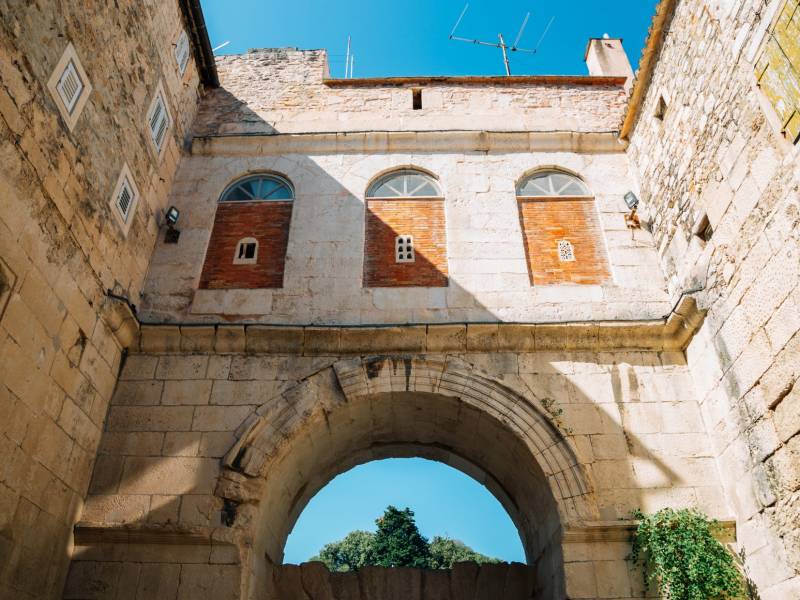
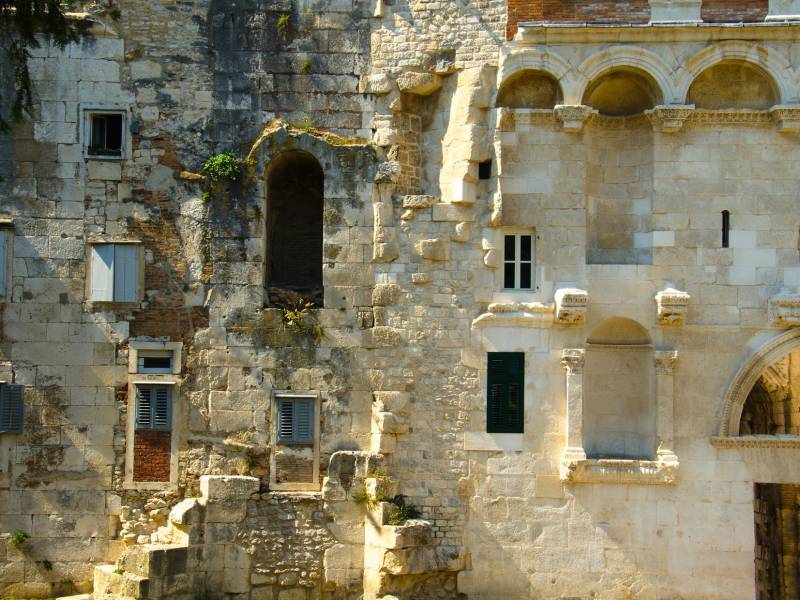
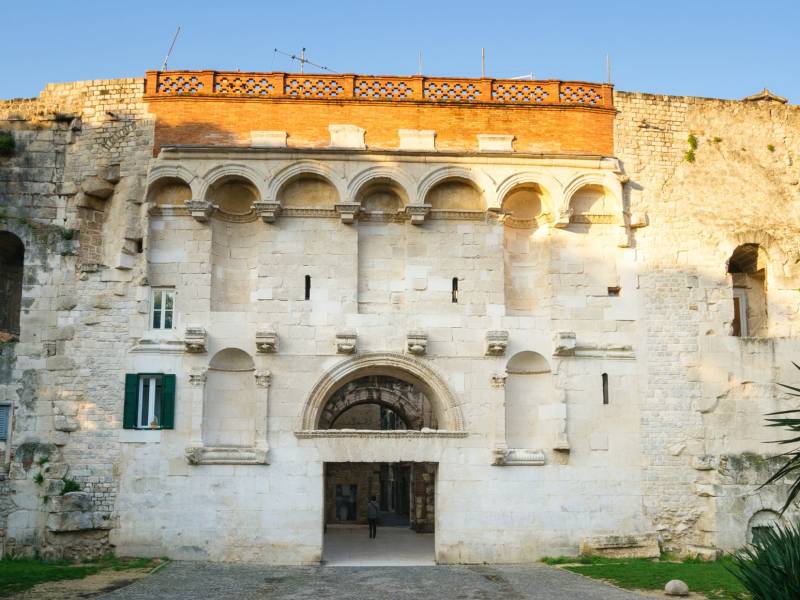
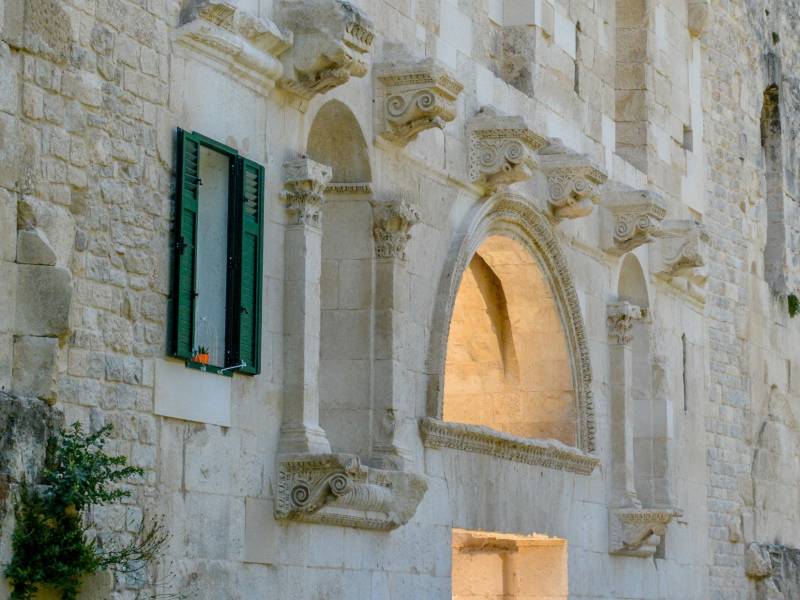
#2
Golden Gate
You are standing in front of the Golden Gate. The Golden Gate (Porta aurea) represents the main and most luxurious entrance to Diocletian's Palace from the northern side. It was built in the late 3rd and early 4th century as part of the palace's original architecture. Through these gates, Emperor Diocletian would enter his residence via the main street (cardo) that led to the central square (Peristyle). The gate was built using the opus quadratum technique, made of large regular stone blocks. It was originally richly decorated with sculptures and architectural elements. It had a double passage (propugnaculum) - external and internal, which was typical of Roman military architecture. Above the passage were niches that housed sculptures of the four tetrarchs (Diocletian and his co-rulers). In the late Middle Ages, for defensive reasons, the outer passage was walled up, and over the centuries, the gate suffered various damages. Significant restoration was carried out in the 1950s, when the gate was partially reconstructed according to its original appearance. Today, in front of the Golden Gate stands the famous monument to Bishop Gregory of Nin, work of sculptor Ivan Meštrović from 1929. The Golden Gate represents an essential point of tourist visits to Split and is one of the most important monuments of Croatian cultural heritage protected by UNESCO.

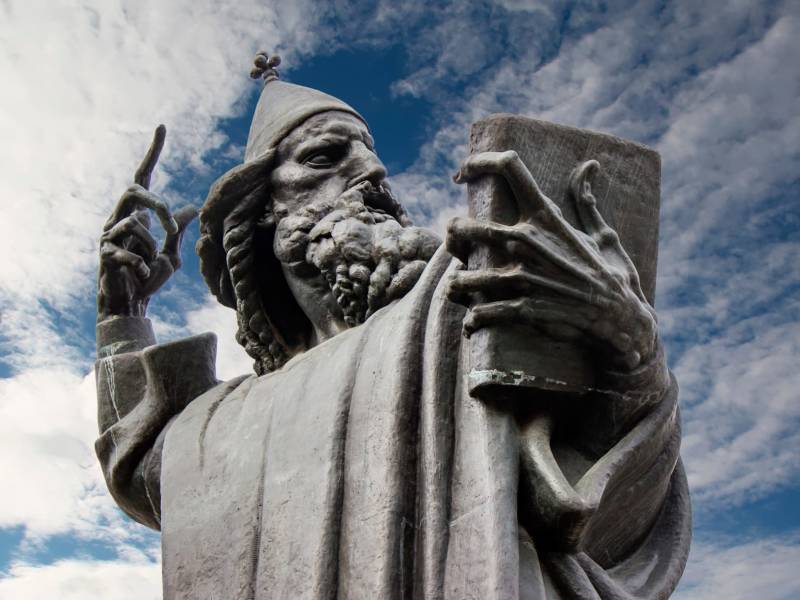

#3
Gregory of Nin
You are now standing in front of one of the most recognizable symbols of the city – the monumental statue of Gregory of Nin, a masterpiece by the famous Croatian sculptor Ivan Meštrović from 1929. Gregory of Nin was a Croatian bishop who lived in the 10th century and served as the Bishop of Nin from 900 to 929. His historical significance lies in his strong advocacy for the use of the Croatian language and Glagolitic script in church liturgy, opposing the then-dominant Latin language. This brought him into conflict with Pope John X and the Church Councils of Split in 925 and 928. The bronze statue, standing 8.5 meters tall, was originally placed in 1929 at the Peristyle of Diocletian's Palace, in front of St. Domnius Cathedral. However, due to opposition from church authorities and conservation reasons, it was relocated in 1954 to its current location in front of the Golden Gate. There's an interesting folk tradition associated with the statue – it is believed that touching the toe on his foot brings good luck and fulfills wishes. As a result, the statue's toe has been polished to a high shine from numerous visitors' touches. During World War II, the statue was dismantled and hidden to protect it from war destruction. After the war, it was reassembled and placed at its current location. The monumental figure depicts Gregory in bishop's robes, holding a cross in one hand and a book in the other, symbolizing his spiritual and cultural mission. Meštrović's work reflects the strength and determination of a historical figure who defended the rights of Croatian people to use their own language in church service. Today, the statue of Gregory of Nin is an essential part of Split's tourist attractions and one of the most photographed monuments in the city, symbolizing the struggle for Croatian national identity and cultural independence.